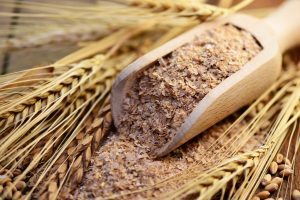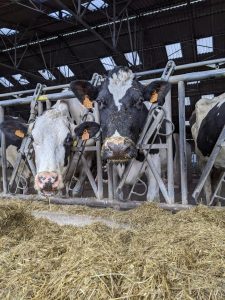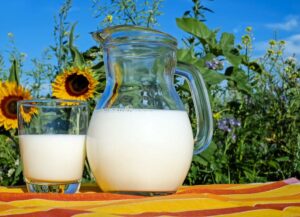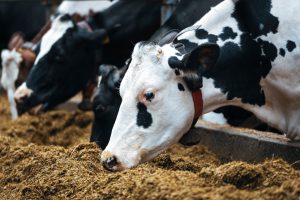Álvaro García
This question, frequently asked by dairy producers, strikes at the heart of farm profitability. It’s not just a technical issue about lab reports or herd averages — it reflects a producer’s effort to maximize income, align herd performance with market demands, and extract more value from every pound of feed. In today’s component-based pricing systems, especially common across the U.S., Canada, and much of Europe, fat and protein content of milk often determines a farm’s bottom line more than total fluid volume. It’s worth noting that not all markets use component pricing. In regions where fluid milk volume is still the primary basis for payment — such as parts of Latin America, Asia, or certain co-ops — the financial incentives to improve fat and protein may be less direct, though processors still value higher-solids milk for cheese and butter manufacturing.
In these markets, milk fat and protein are not just nutritional metrics — they directly influence how much income a farm earns. A few tenths of a percentage point in either direction can make a noticeable difference in mailbox price. That’s why understanding which components are modifiable — and how — becomes essential for dairy nutritionists and herd managers alike.
Of course, the foundation of component production begins with genetics. A cow’s DNA sets the ceiling for how much butterfat and protein she can produce. Some herds and breeds have been selected for high volume, often resulting in lower solids, while others have prioritized components to supply cheese or butter to dairy processors. Modern selection tools such as Net Merit (NM$), Cheese Merit (CM$), and Canada’s Pro$ incorporate component traits directly. Genomic testing provides an even clearer picture of a cow’s ability to produce component-rich milk. However, genetics alone doesn’t tell the entire story. Nutrition plays a critical role in determining whether a cow can reach this genetic potential.
What can (and can’t) cow nutrition do
Milk contains three main components of economic and nutritional interest: fat, protein, and lactose. Each plays a role in how milk is priced and perceived, but they don’t all respond equally to dietary changes. Understanding which components are nutritionally flexible — and which are not — helps set realistic goals when adjusting a ration.
Among the three components, lactose is the least responsive to nutrition. Its concentration in milk — typically ranging from 4.7% to 4.9% is tightly regulated by the availability of glucose and mammary gland metabolism. Because of this tight biological regulation, even significant changes in feed formulation have little effect on lactose concentration. However, it’s worth noting that total lactose yield — that is, the pounds of lactose exported in milk — still depends on overall milk volume, which is itself influenced by energy intake. Adequate dietary energy supports the glucose supply required for lactose synthesis, so while concentration remains relatively fixed, lactose output may still respond indirectly to improved nutritional energy density. When lactose content does drop noticeably, it often points to udder health issues such as mastitis, not a nutritional imbalance. For this reason, lactose is more of a stability indicator than a target for improvement through feeding.
Milk protein shows moderate responsiveness to dietary strategies and improving it can be economically worthwhile under component-based pricing systems. The cow synthesizes milk protein from amino acids absorbed in the small intestine, most of which originate from microbial protein produced in the rumen. To maximize microbial yield, diets must provide a synchronized supply of fermentable carbohydrates and rumen-degradable protein, creating the optimal environment for microbial growth. This principle is well-documented in the most recent dairy nutrient guidelines published by the National Academies of Sciences, Engineering, and Medicine (NASEM, 2021), which emphasize the importance of carbohydrate-nitrogen synchronization for optimal microbial protein synthesis.
However, in high-producing cows — particularly during early lactation — microbial protein alone may not supply enough metabolizable amino acids. That’s where rumen-undegradable protein (bypass protein) and rumen-protected amino acids, especially methionine and lysine, become critical. These supplemental sources help meet the cow’s amino acid requirements without relying solely on microbial output. Strategic inclusion of these ingredients can lead to measurable increases in milk protein concentration — typically 0.1 to 0.2 percentage points — with substantial financial benefits when scaled across the herd. While effective, these solutions can be costly, so it’s important to evaluate their return on investment. In many cases, simple dietary adjustments — such as improving starch fermentability, optimizing total digestible nutrients (TDN), or enhancing forage quality — can improve amino acid flow to the small intestine without relying solely on expensive protected products.
Of the three milk components discussed, milk fat is the most responsive to changes in diet — and often the most vulnerable. Low milk fat tests are frequently the result of subacute ruminal acidosis (SARA), where reduced rumen pH alters microbial populations and promotes the formation of biohydrogenation intermediates that suppress fat synthesis in the mammary gland. This process typically begins when diets rich in rapidly fermentable starches or lacking in adequate fiber reduce the rumen’s pH below optimal levels (around 6.0 to 6.2). The resulting shift in microbial populations interferes with normal fat biohydrogenation, producing intermediates such as trans-10, cis-12 conjugated linoleic acid (CLA), which inhibits de novo fat synthesis in the udder. Monitoring rumen pH and fiber intake is thus crucial to prevent this condition.
Here are some strategies that help stabilize and improve milk fat levels:
Table 1. Strategies to Improve Milk Fat Levels | |||
Adequate peNDF for rumination | Limit unsaturated fats | Rumen-protected fats (Ca salts) | Balance forage-to-concentrate ratio |
In addition to total fiber content, the physical form of fiber — particularly particle size — plays a critical role in stimulating chewing and rumination. Longer fiber particles from coarsely chopped forages promote saliva production and rumen buffering capacity. Tools like the Penn State Particle Separator can help assess whether the forage-to-concentrate ratio and particle distribution support optimal rumen function.
What does it mean for profit?
Suppose milk protein increases by 0.15 percentage points and butterfat by 0.25 percentage points in a 1,000-cow herd. At current market values — $3.25/lb. for protein and $2.60/lb. for fat — these modest gains can result in tens of thousands of dollars in added income without increasing total milk volume. On top of that, improved udder health and reduced somatic cell counts can enhance yield further. For instance, increasing production by just 2 lb. (0.91 kg) per cow per day through better rumen health or reduced inflammation adds 2,000 lb. per day in a 1,000-cow herd, generating an additional $360 per day or $131,400 annually at a milk price of $0.18/lb.—all without increasing cow numbers or labor.
Let’s consider a 2025 example from a farm producing 1,050,000 pounds of milk, with a net pay of $19.45 per cwt as reported for March 2025. The farm produced milk with 4.00% butterfat (42,000 lb.), 3.20% protein (33,600 lb.), and 5.70% other solids (59,850 lb.). They received $2.6242/lb. for butterfat and $2.4606/lb. for protein.
What would happen if they increased butterfat by 0.25 percentage points and protein by 0.15 points?
- New Butterfat Yield: 43,050 lb. → $112,967.91
- New Protein Yield: 34,125 lb. → $83,990.78
- Other Solids: unchanged at $21,832.40
- PPD and Premiums: unchanged at $21,000.00 and $630.00 respectively
New Gross Pay:
Total = $112,967.91 + $83,990.78 + $21,832.40 + $21,000.00 + $630.00 = $240,421.09
After deductions of $11,130.00:
New Net Pay = $229,291.09
This results in a new net pay of $21.84 per cwt, up from $19.45 — an increase of $2.39 per cwt or 12.3%, resulting in an additional $24,076.69 in annual income. All through just small improvements in milk components—without adding cows, increasing labor, or expanding facilities.
Numerous studies have validated the relationship between milk components and net return, especially in pricing systems where fat and protein drive income. Strategic feeding practices that improve component yield without increasing milk volume can enhance efficiency and milk revenue per cow, all while maintaining or even lowering environmental impact per unit of milk.
Improving milk components is not only possible — it’s often one of the most efficient ways to increase profitability without expanding herd size or increasing labor. While genetics sets the upper limit for component yield, nutrition determines how much of that potential is realized in the tank. A well-balanced ration that optimizes rumen health, fiber effectiveness, amino acid supply, and energy density can result in modest yet impactful improvements in fat and protein. As demonstrated in this real-world example, even small shifts in component percentages can translate into tens of thousands of dollars in additional revenue annually. And because these changes occur without increasing milk volume, they often improve feed efficiency and reduce environmental load per unit of milk produced! Dairy producers don’t need drastic changes to make these gains. This reduction occurs because more milk solids are produced from the same feed and manure inputs, improving the nutrient use efficiency of the system. According to recent life cycle assessments, increasing milk solids per cow while maintaining or reducing total dry matter intake can significantly lower greenhouse gas emissions and nitrogen excretion per kilogram of fat- and protein-corrected milk (FPCM). With the help of a qualified nutritionist, producers can fine-tune feeding strategies to enhance milk quality. These improvements support cow health and contribute to long-term productivity.
You don’t necessarily need more milk — you need more value in every pound!
© 2025 Dellait Knowledge Center. All Rights Reserved.









